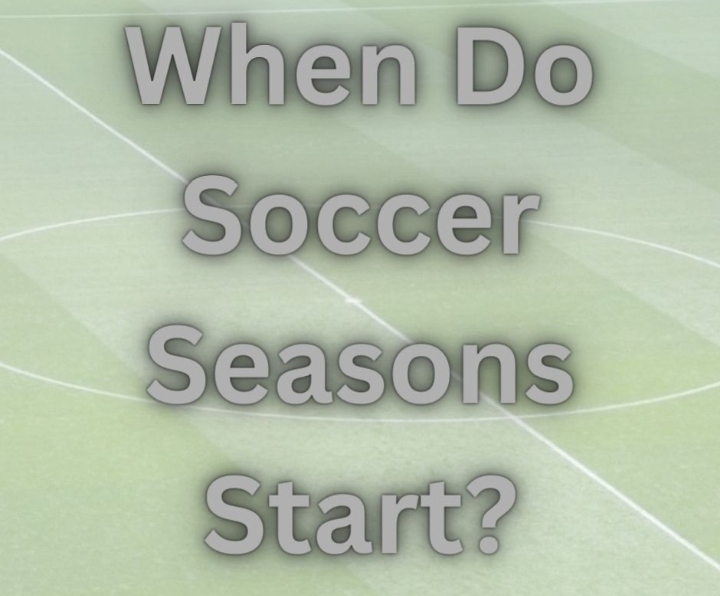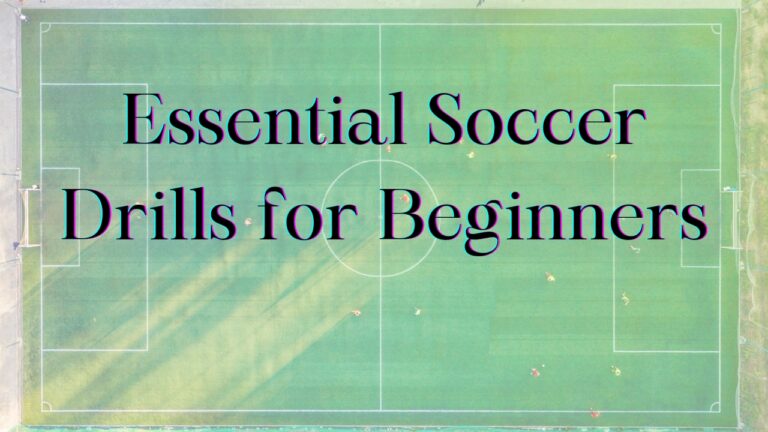Soccer is the world’s most popular sport, with over 4 billion fans globally. As such, soccer leagues and competitions have tremendous cultural and economic significance in countries across the globe. While soccer is played year-round in many regions, official league seasons dictate the annual competition calendars for professional and youth clubs.
Knowing soccer season start dates is crucial for players, coaches, fans, and families to plan training, conditioning, travel, and other logistics accordingly. Start dates for soccer seasons vary based on the country, league, and age group. While most professional European leagues run from August to May, Major League Soccer in the U.S. and Canada has a February to December schedule. Youth soccer often aligns with school terms, with the fall and spring seasons.
This guide will provide a comprehensive overview of when soccer seasons kick off across different leagues and age groups. We’ll explore season structures in Europe, North America, and globally. Whether you’re a player getting ready for opening day or a fan eager to start a new season, use this resource to understand soccer season start dates.
General Soccer Season Information
In most parts of the world, soccer season aligns with the school year and calendar. This means that the majority of professional club seasons start in August or September and run through May of the following year.
For example, the English Premier League kicks off in mid-August each year. Germany’s Bundesliga and Spain’s La Liga also get underway in late August. Italy’s Serie A season typically starts the first week of September.
While the season starts remains consistent, registration deadlines for youth soccer leagues are often earlier in the summer months. Tryouts and training camps may begin 4-6 weeks before the first games. This allows coaches to assess players’ skills and fitness levels to form teams accordingly.
The early stages of a new soccer season focus on conditioning and tactical preparations during preseason. Friendly matches are scheduled to test lineups and strategies. As late summer transitions into fall, competitive league play commences.
During the active season from September to May, teams face weekly league matches with other competitions like domestic cups interspersed. The season finishes with champions being crowned in the various leagues and cups.
Youth Soccer Seasons
Youth soccer follows a more defined fall and spring season structure, aligned with the school calendar.
The primary youth soccer season in the U.S. and Canada runs from September through November. This fall season lasts on average 8 weeks, with teams playing one game per week. The season culminates with playoffs and championships in November.
Some youth soccer clubs and leagues then continue playing through the winter and spring months. The winter season runs from November to February, followed by the spring season from March to June. High school varsity soccer is also aligned to the fall and spring seasons.
More competitive and elite-level youth clubs extend play further by participating in indoor leagues during winter and in tournaments year-round. Top athletes commit to 6-12 month seasons to develop skills and gain exposure for college recruitment.
In Europe, youth soccer leagues similarly follow the standard soccer season start date in late summer. Youth teams compete throughout their seasons to qualify for international tournaments like the UEFA Youth League which kicks off in September alongside the Champions League.
Major League Soccer (MLS) Seasons
Unlike European soccer leagues, Major League Soccer in the United States and Canada follows its unique schedule.
The MLS season starts in late February and runs through early December, with each team playing 34 regular season matches. The league divides teams into Eastern and Western Conferences.
The MLS regular season finishes in October, with the Supporters’ Shield awarded to the team with the best overall record. Teams then compete in the MLS Cup Playoffs throughout November and December to crown the league champion.
The playoff format involves single-elimination rounds leading up to the conference finals, followed by the MLS Cup championship match in early December. Columbus Crew are the current defending MLS Cup title holders.
This condensed calendar with matches starting in February allows MLS to avoid major scheduling conflicts with the demanding winter sports season in North America. The league continues to gain prominence and attract global talent but maintains a distinctive format adapted to the U.S./Canada market.
European Soccer League Seasons
As mentioned previously, most major European soccer leagues follow a standard schedule that starts in August and ends in May of the following year.
The English Premier League kicks off in early August, with its 20 teams facing each other home and away over 38 match weeks through May. Fellow top leagues in Spain (La Liga), Germany (Bundesliga), France (Ligue 1), and Italy (Serie A) adhere to a similar format.
The earliest league start belongs to Russia’s Premier League which begins in late July. Scotland’s Premiership starts in early August, while Portugal’s Primeira Liga and the Netherlands’ Eredivisie launch their seasons in mid-August.
Most European leagues take a short winter break around Christmas and New Year’s. The Bundesliga has an extended one-month break in January/February. League and cup competitions overlap, with the UEFA Champions League group stage starting up each September.
This August to May calendar allows European clubs to complete their domestic seasons before players head to international duty in summer tournaments like the World Cup or European Championship. It provides a consistent structure across most top leagues on the continent.
Soccer Off-Season Activities
While the traditional soccer season in Europe and North America runs from August/September through May, there is no true off-season for avid players.
Indoor soccer leagues continue to grow in popularity for year-round play. Arena complexes with artificial turf fields offer leagues and tournaments during the winter months. Futsal, a fast-paced indoor version of soccer played with a smaller ball, is also a popular winter and off-season activity.
Top clubs run training camps and play exhibition matches during the summer months between seasons. For youth players, practices transition indoors and focus on technical skill development during the winter.
The US Youth Soccer National League now offers a full year-round schedule. It holds its national playoffs in July after concluding its spring season in June. Teams who qualify can essentially play 11 straight months of competitive matches.
For professional players, the short summer off-season also involves recovery and rehabilitation programs. When one season ends in May, preseason training for the next campaign begins soon after, in June/July.
In essence, today’s combination of indoor facilities and heightened demand for year-round development is eliminating the traditional concept of an off-season. Soccer has become a nearly 12-month commitment for youth, amateur, and professional players alike.
Frequently Asked Questions
Can you play soccer year-round?
Yes, the rise of indoor soccer and futsal makes it possible to play soccer 12 months a year without an off-season. Top youth players commit to indoor training and futsal leagues during the winter.
What’s the difference between soccer seasons in Europe and the USA?
Most European soccer leagues run from August to May. MLS and youth soccer in North America follow a February to December schedule. The seasons are structured differently but enable year-round play.
Why do youth and high school soccer seasons only last 2-3 months?
Youth soccer has historically aligned with school terms, with defined fall and spring seasons lasting around 8 weeks. This allows multi-sport participation. Elite clubs now extend seasons and training further.
When does the soccer season start in South America?
The soccer season in South America generally aligns with the calendar year from January/February to December. Most leagues start in January after a brief December off-season.
Conclusion
When the soccer season starts is a common question for players, parents, coaches, and fans across the globe. While exact start dates vary, the August-May schedule is standard across most of Europe’s top leagues.
In North America, Major League Soccer starts in February, while youth soccer is structured as fall and spring seasons between August and June. Thanks to indoor facilities, soccer can now be played virtually year-round in many regions.
Key takeaways include:
Most European professional leagues run from August to May.
The MLS season is from February through December.
Youth soccer follows the fall and spring season formats.
Indoor leagues enable near year-round play.
Knowing season start dates is crucial for planning and preparation.
Whether you are getting ready for a new youth season or eagerly awaiting the start of the Champions League, hopefully, this guide provides helpful context on soccer season start dates. Pay attention to registration deadlines, preseason timing, and competition schedules as you gear up for kickoff!
Read More: What Is a Hat Trick in Soccer?







